On this page
ReptilesThis page lists a selection of books about the lizards and snakes of Great Britain and Ireland. A number of general books about reptiles are also included.The books are arranged by publication date with the most recent at the top.
|
|
|
|
LizardBoria Sax
Animal series
Reaktion Books
2017
"This illuminating book demonstrates how the story of lizards is interwoven with the history of the human imagination. Boria Sax describes the diversity of lizards and traces their representation in many cultures, including those of pre-conquest Australia, the Quiche Maya, Mughal India, China, Central Africa, Europe and America. Filled with beguiling images, Lizard is essential reading for natural history enthusiasts, students of animal studies and the many thousands of people who keep lizards as pets."
|
Buy from amazon.co.uk 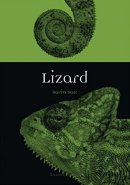
|
|
Field Guide to the Amphibians and Reptiles of Britain and EuropeJeroen Speybroek, Wouter Beukema, Bobby Bok, Jan Van der Voort
Illustrations: Ilian Velikov
British Wildlife Field Guides
Bloomsbury
2016
"The taxonomy and systematics of European reptiles and amphibians have changed a lot in recent years, yet there is no modern, up-to-date field guide available that comprehensively covers all the species. The last illustrated field guide to European reptiles and amphibians was first published 38 years ago, and remains oudated despite occasional reprints and new editions. This major new field guide addresses this deficiency. Every species will be covered in detail with a focus on identification and geographical variation; species texts also cover distribution, habitat and behaviour. A detailed up-to-date map is also included for each species. Superb colour illustrations by talented artist Ilian Velikov depict every species and all major variations, and colour photographs are also included for most species. This groundbreaking new guide will become the definitive field reference for these two groups of animals."
|
Buy from amazon.co.uk 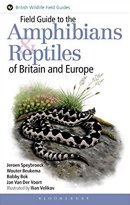
|
|
The Amphibians & Reptiles of ScotlandChris McInerny and Pete Minting
Glasgow Natural History Society
2016
This book can be downloaded from the Glasgow Natural History Society website.
"This book is designed to be an interesting and informative guide to the amphibians and reptiles that are found in the wild in Scotland. We have focused on those species native to Scotland, plus those which are non-native but are breeding in the wild. In addition to the native leatherback sea turtle, which migrates regularly to Scottish waters to feed, we have included three vagrant sea turtle species that occasionally drift here on oceanic currents."
|
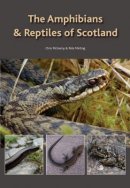 |
|
The Sand Lizard: Between Light and ShadowIna Blanke, Helen Fearnley
Laurenti Verlag
2015
"The Sand Lizard: Between Light and Shadow is a consolidation of sand lizard literature which presents our current knowledge and understanding of the species. It is aimed at the enthusiast, those working in the ecological sector and in site management. The chapters are wide-ranging and review the general appearance, systematics and distribution of the sand lizard across its entire range then examine their diet, behaviour, threats, habitat and population ecology. The reader is taken on a seasonal journey from the emergence of the first lizard in spring to the retreat of juveniles into hibernation. The Sand Lizard: Between Light and Shadow also contains valuable practical conservation advice and provides examples of best practice when working to ensure the longevity of our sand lizard populations at a time when development pressure is fierce."
|
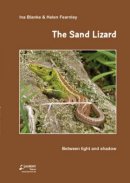 |
|
Cold Blood: Adventures with Reptiles and AmphibiansRichard Kerridge
Vintage
2015
"Part natural-history guide to these animals, part passionate nature writing, and part personal story, Cold Blood is an original and perceptive memoir about our relationship with nature. Through close observation, it shows how even the suburbs can seem wild when we get close to these thrilling, weird and uncanny animals."
|
Buy from amazon.co.uk 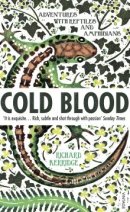
|
|
How Snakes Work: Structure, Function and Behavior of the World's SnakesHarvey B. Lillywhite
Oxford University Press
2014
"In How Snakes Work: The Structure, Function and Behavior of the World's Snakes, leading zoologist Harvey B. Lillywhite has written the definitive scientific guide to the functional biology of snakes. Written for both herpetologists and a more general audience with an interest in the field, How Snakes Work features nearly two hundred color images of various species of snakes, used to provide visual examples of biological features explained in the text. Chapter topics include the evolutionary history of the snake, feeding, locomotion, the structure and function of skin, circulation and respiration, sense organs, sound production, and reproduction. Containing all the latest research and advances in our biological knowledge of the snake, How Snakes Work is an indispensable asset to professional zoologists and enthusiasts alike."
|
Buy from amazon.co.uk 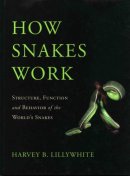
|
|
The Reptiles of the Western Palearctic, Volume 2: Annotated Checklist and Distributional Atlas of the Snakes of Europe, North Africa, Middle East and Central AsiaRoberto Sindaco, Alberto Venchi, Cristina Grieco
Edizioni Belvedere
2013
"A complete checklist of about 190 snake species of the Western Palearctic. 184 distributional colour maps. 49 additional maps showing the distribution of all genera and some species groups. 343 high quality colour photographs illustrating 160 species and many subspecies."
|
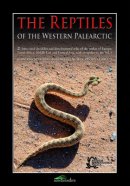 |
|
Amphibians and ReptilesTrevor BeeBee
Naturalists' Handbooks Volume 31
Pelagic Publishing
2013
"Amphibians and Reptiles is a comprehensive guide to the native and non-native species of amphibian and reptile found in the British Isles. Professor Trevor Beebee covers the biology, ecology, conservation and identification of the British herpetofauna, and provides keys for the identification of adult and immature newts and newt eggs, larvae and metamorphs; frog and toad adults and metamorphs, spawn and larvae; adult and hatchling limbed lizards; and adult snakes. Distribution maps are included for all species, and Amphibians and Reptiles is illustrated throughout with colour photographs and figures."
|
Buy from amazon.co.uk 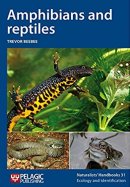
|
|
SnakesDavid Gower, Katherine Garrett and Peter Stafford
London Natural History Museum
2nd edition
2012
"An invaluable reference for many years, the Natural History Museum's guide to snakes is re-launched in March 2012 in an eye-catching new format, with all the latest information on these fascinating animals and new colour photographs. From garter snakes and vipers to boas and pythons, Snakes describes the biology and natural history of this ecologically diverse and important group of animals. It highlights the variety and complexity of this group that includes more than three thousand living species. Divided into three easy-to-use parts, the book explores snake structure and lifestyle, their evolution and classification, and describes the key features and habits of the world's various snake families."
|
Buy from amazon.co.uk 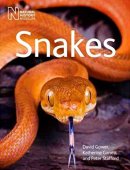
|
|
The Private Life of AddersRodger McPhail
Merlin Unwin Books
2011
"The common European adder (Vipera berus) is found throughout Europe and northern Asia. Despite its widespread distribution, and its notoriety as one of Europe's few truly venomous snakes, very little is known about its private life. Rodger McPhail, the celebrated wildlife artist, has had a life-long fascination with adders. He has been observing and photographing them on his local moor in Lancashire for many years. His unique collection of photographs reveals adders as never before seen and his succinct text offers an insight into this fascinating reptile."
|
Buy from amazon.co.uk 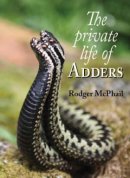
|
|
An Examination Of Reptile And Amphibian Populations In Gardens, The Factors Influencing Garden Use And The Role Of A 'Citizen Science' Approach For Monitoring Their Populations Within This HabitatElizabeth Humphreys, Mike Toms, Stuart Newson, John Baker and Kathy Wormald
BTO Research Report 572
British Trust for Ornithology
2011
"This report considers the factors that might influence garden use by reptile and amphibian species, before going on to make recommendations for management options within individual gardens. Data from the 'Reptiles and Amphibians in your Garden Survey' (RAGS) are used to examine those factors influencing garden use, including those present within individual gardens as well as in the wider landscape which surrounds them . This report also examines the potential value of data collected through the BTO Garden BirdWatch for monitoring long-term trends in garden use by reptile and amphibian species."
|
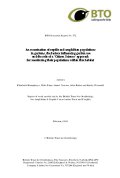 |
|
Reptile Habitat Management HandbookPaul Edgar, Jim Foster and John Baker
Amphibian and Reptile Conservation Trust
2010
"This handbook brings together habitat management advice for all native UK reptiles. The half dozen species here have experienced population declines, and are now all Biodiversity Action Plan priorities. The book is aimed at site managers, and those who advise on management. It gives advice for a range of settings, from dedicated nature reserves to farmland and includes a useful appendix of Environmental Stewardship options. The text is backed up by full colour photos showing typical habitat examples and species behaviour and will appeal to anyone interested in the herpetofauna of the UK and Europe."
|
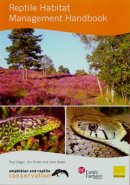 |
|
Britain's Reptiles and AmphibiansHoward Inns
WildGuides
2009
"This detailed guide to the reptiles and amphibians of Britain, Ireland and the Channel Islands has been produced with the aim of inspiring an increased level of interest in these exciting and fascinating animals. It is designed to help anyone who finds a lizard, snake, turtle, tortoise, terrapin, frog, toad or newt to identify it with confidence. The book features: Stunning photography. An easy-to-use approach to identification. Superbly illustrated introductory sections on the biology and conservation, taxonomy, life-cycle and behaviour of each species group. Profiles of the 16 native reptiles and amphibians that breed in Britain, Ireland and the Channel Islands and the 5 marine turtles that visit our seas. Profiles of 7 established non-native species and a summary of 8 more with a history of release/escape. Distribution maps based on the latest available information."
|
Buy from amazon.co.uk 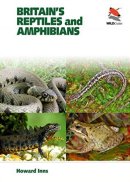
|
|
The Reptiles of the Western Palearctic, Volume 1: Annotated Checklist and Distributional Atlas of the Turtles, Crocodiles, Amphisbaenians and Lizards of Europe, North Africa, Middle East and Central AsiaRoberto Sindaco, Valery K. Jeremcenko
Edizioni Belvedere
2008
"This book shows a comprehensive picture of the reptiles, excluding snakes, living in Europe, North Africa, Middle and Near East and Central Asia. The bulks of this book are an annotated checklist and a distributional atlas of about 500 species of lizards, crocodiles, turtles and terrapins, and amphisbaenians, living in the Western Palaearctic. Information on distribution, subspecies, chorotype, affinities and main references are provided for each species, as well as 226 nice colour maps showing the global distribution of all of the species on a grid of 1 degree. For each species map the bibliographic and original sources (more than 850 sources are listed) are indicated. Other 83 additional white and black maps show the distribution of all genera and main species groups of Palaearctic reptiles."
|
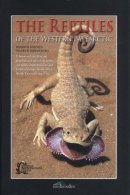 |
|
Lizard Ecology: The Evolutionary Consequences of Foraging ModeEditor: Stephen M Reilly, Lance B McBrayer, Donald B Miles
Cambridge University Press
2007
"The foraging mode of lizards has been a central theme in guiding research in lizard biology for three decades. Foraging mode has been shown to be a pervasive evolutionary force molding the diet, ecology, behavior, anatomy, biomechanics, life history, and physiology of lizards. This 2007 volume reviews the knowledge on the effects of foraging mode on these and other organismal systems to show how they have evolved, over a wide taxonomic survey of lizard groups. The reviews presented here reveal the continuous nature of foraging strategies in lizards and snakes, providing the reader with a review of the field, and will equip researchers with fresh insights and directions for the sit-and-wait vs. wide foraging paradigm. This will serve as a reference book for herpetologists, evolutionary biologists, ecologists and animal behaviorists."
|
Buy from amazon.co.uk 
|
|
Lizards: Windows to the Evolution of DiversityEric R. Pianka and Laurie J. Vitt
University of California Press
2006
"This book, lavishly illustrated with color photographs, is the first comprehensive reference on lizards around the world. Accessible, scientifically up-to-date, and written with contagious enthusiasm for the subject, Lizards: Windows to the Evolution of Diversity covers species evolution, diversity, ecology, and biology. Eric R. Pianka and Laurie J. Vitt have studied and photographed members of almost all lizard families worldwide, and they bring to the book a deep knowledge based on extensive firsthand experience with the animals in their natural habitats."
|
Buy from amazon.co.uk 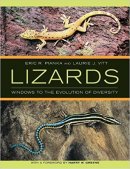
|
|
Amniote Paleobiology: Perspectives on the Evolution of Mammals, Birds, and ReptilesMatthew Carrano
University of Chicago Press
2006
"Living amniotes - including all mammals, birds, crocodilians, snakes, and turtles - comprise an extraordinarily varied array of more than 21,000 species. Found in every major habitat on earth, they possess a truly remarkable range of morphological, ecological, and behavioral adaptations. The fossil record of amniotes extends back three hundred million years and reveals much about modern biological diversity of form and function. A collaborative effort of twenty-four researchers, "Amniote Paleobiology" presents thirteen new and important scientific perspectives on the evolution and biology of this familiar group. It includes new discoveries of dinosaurs and primitive relatives of mammals; studies of mammalian chewing and locomotion; and examinations of the evolutionary process in plesiosaurs, mammals, and dinosaurs. Emphasizing the rich variety of analytical techniques available to vertebrate paleontologists - from traditional description to multivariate morphometrics and complex three-dimensional kinematics - "Amniote Paleobiology" seeks to understand how species are related to each other and what these relationships reveal about changes in anatomy and function over time."
|
Buy from amazon.co.uk 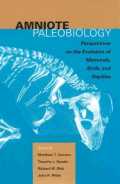
|
|
SnakeDrake Stutesman
Animal series
Reaktion Books
2005
"Snake explores the animal's natural history, and the widespread snake symbolism, from Eve's serpent in the Bible, to Kaa in The Jungle Book; from the Chinese zodiac to Indian snake charmers and the Hollywood film "Anaconda". Including many illustrations and a wide range of material, from snake cooking and the use of venom in medicine, to the history of snake symbolism in art, architecture and clothing, this book will interest snake enthusiasts and specialists, as well as all those who love, admire or fear this remarkable and durable animal."
|
Buy from amazon.co.uk 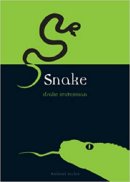
|
|
Sillocks, Skarfies and Selkies: The Fish, Amphibians, Reptiles, Birds and Mammals of OrkneyChris Booth and Jean Booth
Orcadian
2005
"Does it occur in Orkney? Is it rare? When and where can it be seen? The purpose of this book is to try, if possible, to answer some of these questions, attempting to produce a complete list of Orkney's vertebrate fauna, together with illustrations, details and where applicable, their traditional Orcadian name."
|
Buy from amazon.co.uk 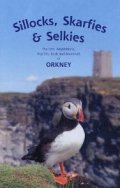
|
|
Guide to the Reptiles and Amphibians of Britain and Ireland
Occasional Publication Volume 55
Field Studies Council
2nd edition
2003
An 8 page fold-out chart that covers the non-marine reptiles and amphibians found in Britain and Ireland.
|
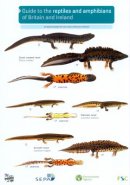 |
|
Reptiles and Amphibians: Britain and EuropeNicholas Arnold, Denys Ovenden
Collins
2002
"This book contains descriptions of every species of salamander, newt, frog, tree frog, toad, tortoise, turtle, terrapin, gecko, agama, lizard, chameleon, slow worm, skink, amphisbaenian and snake found in mainland Europe. Every species and distinct subspecies is described in detail, with notes on its range, size, colour and markings, diagnostic characters, habitat, behaviour and, in the case of venomous snakes, the type and virulence of its poison. The final part of the book deals with the identification of the eggs and tadpoles of frogs, toads, newts and salamanders. There are also introductions to each group of animals, with helpful keys to aid identification where necessary, an introduction to the biology of reptiles and amphibians and how best to study this fascinating part of our fauna."
|
Buy from amazon.co.uk 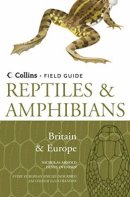
|
|
Amphibians and ReptilesTrevor Beebee and Richard Griffiths
Cover art: Robert Gillmor
New Naturalist 87
Collins
2000
"Building on the solid foundations established by the two earlier New Naturalist volumes on this subject, eminent herpetologists Trevor Beebee and Richard Griffiths have brought together a wealth of new and fascinating information on the British amphibians and reptiles. An introductory chapter looks at the subject of biogeography and how factors such as geological history, latitude and climate affect ecology, life histories and behaviour. The authors then go on to discuss historical interest in amphibians and reptiles, from how they have featured in witchcraft and legends to modern perspectives. A third chapter covers basic biology of amphibians and reptiles, before each of the main groups – newts, frogs and toads, lizards, snakes and chelonians – are examined in further detail. A comprehensive account for each species covers behaviour, life history, reproduction and distribution, as well as ecology and conservation status, areas in which significant discoveries have been made in recent years. There is also a chapter with important new information on the burgeoning number of introduced species in Britain, such as bullfrogs, alpine newts and wall lizards."
|
Buy from amazon.co.uk 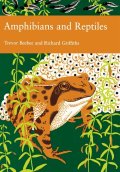
|
|
Snakes: The Evolution of Mystery in NatureHarry W. Greene
University of California Press
2000
"This book provides an up-to-date summary of the biology of snakes on a global basis. Eight chapters are devoted to general biology topics, including anatomy, feeding, venoms, predation and defense, social behavior, reproduction, evolution, and conservation; eight chapters survey the major snake groups, including blindsnakes, boas, colubrids, stiletto snakes, cobras, sea snakes, and vipers. Details of particular interest, such as coral snake mimicry and the evolution of the0 rattle, are highlighted as special topics. Chapter introductory essays are filled with anecdotes that will tempt nonspecialists to read on, while the book's wealth of comprehensive information will gratify herpeto-culturalists and professional biologists."
|
Buy from amazon.co.uk 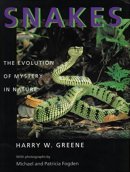
|
|
Sand Lizard Conservation HandbookNick Moulton and Keith Corbett
English Nature
1999
|
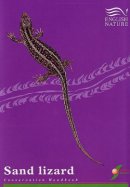 |
|
Mammals, Reptiles and Amphibians of Britain and EuropePaul Morrison
Macmillan
1994
"Including over 500 photographs of animals in their natural habitats, this book combines information on mammals, reptiles and amphibians. The text not only allows the reader to locate and identify species in the wild, but offers a fascinating insight into the private lives of animals which are typically secretive, and often nocturnal."
|
Buy from amazon.co.uk 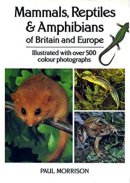
|
|
Snakes And LizardsTom Langton
Whittet Books
1989
|
Buy from amazon.co.uk 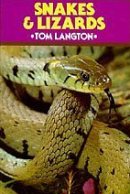
|
|
Lizards of the British IslesPeter Stafford
Shire Natural History 46
1989
|
Buy from amazon.co.uk 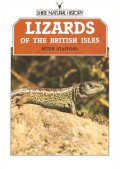
|
|
Reptiles and Amphibians in BritainDeryk Frazer
Collins
New Naturalist 69
1983
"Dr Frazer describes all those species of reptiles and amphibians native to Britain and others, once alien to our islands, which have been introduced. He makes use of the latest field discoveries, his own accumulated research and that of many other distinguished herpetologies, to present a detailed picture of reptile and amphibian ecology in Britain. An introductory first chapter deals with anatomy and physiology of herptiles and their evolution, ending with a brief look at the way in which their ecology may be studied. Succeeding chapters each give details of particular families and their species: frogs and toads, newts, lizards, snakes and chelonians. A final chapter discusses conservation of herptiles in Britain, especially of those species which are in danger."
|
Buy from amazon.co.uk 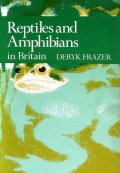
|
|
Reptiles and Amphibians of Britain and EuropeE.N. Arnold, J.A. Burton, D.W Ovenden
Collins
1978
"A guide which contains descriptions of every species of reptile and amphibian found in mainland Europe, together with introductions to each group of animals and information on the biology of reptiles and amphibians."
|
Buy from amazon.co.uk 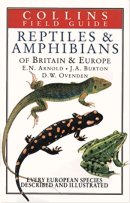
|
|
Lives of British LizardsColin Simms
Goose & Sons
1970
|
Buy from amazon.co.uk 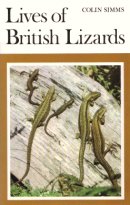
|
|
The British Amphibians and ReptilesM. Smith
Collins
The New Naturalist 20
1951
"This book fills an obvious gap in the literature of British natural history. Very many years have passed since a work of any kind has been published on our amphibians and reptiles, and indeed no other book at all has been written that deals with every known aspect of their structure and behaviour. Dr. Smith has been collecting his material for a third of a lifetime, during which he has become the acknowledged authority on the herpetology, not only of Britain but of Western Europe. His association with the British Museum and his years of expeditions and field observations have made him into as happy combination of ecological naturalist and museum man – and surely he is the best kind of naturalist who knows his way about the fields, woods and streams, as well as he knows his way about the intricacies of description, measurement and bibliography."
|
Buy from amazon.co.uk 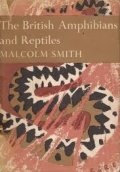
|
|